Making magic: how Disneyland Paris' most famous rides are designed and built
T3.com speaks to the ride creators to find out what goes into building a new kind of fun
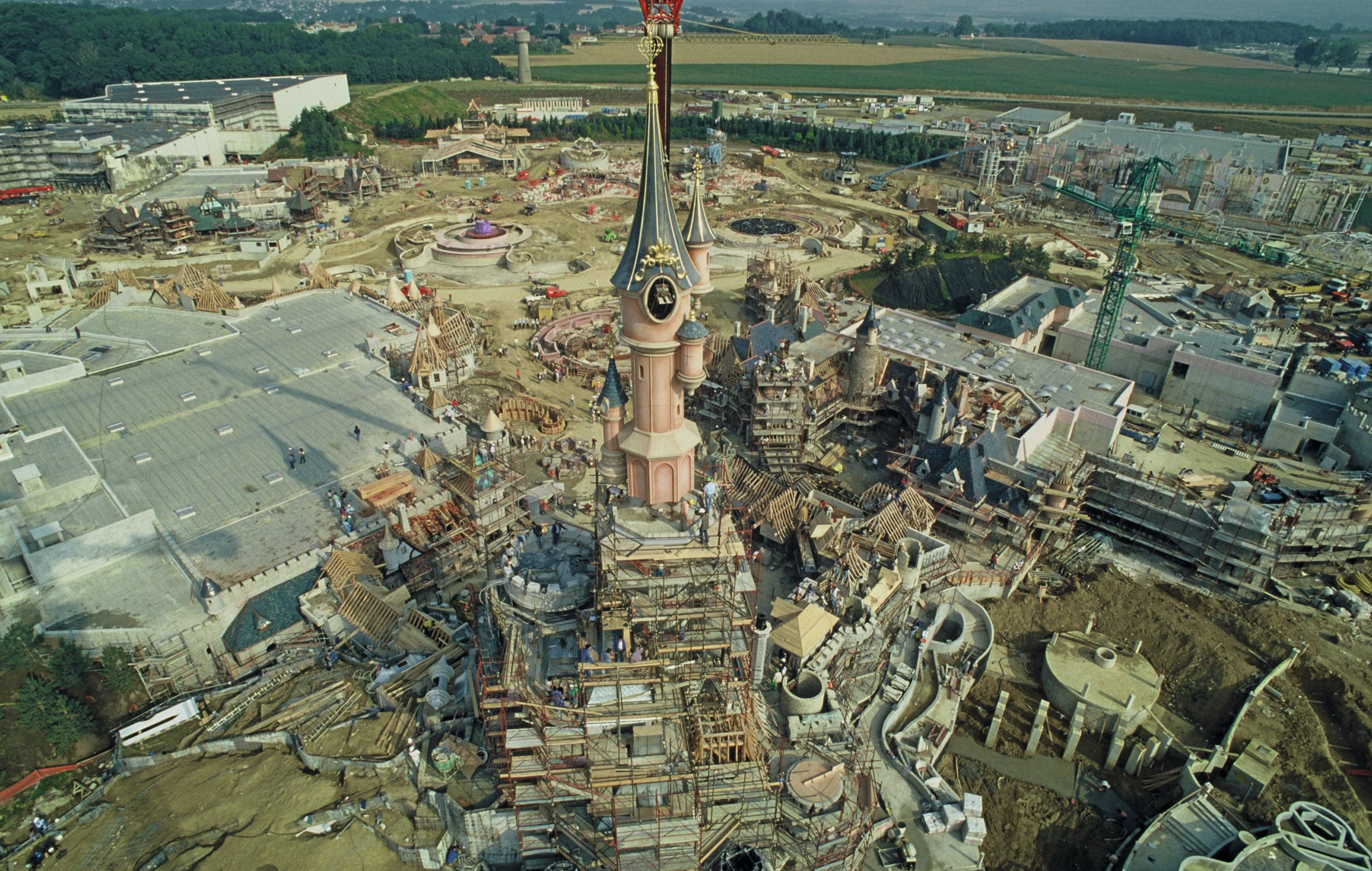
The maxim about any sufficiently advanced technology being indistinguishable from magic never holds more true than at Disneyland.
Disneyland Paris has been combining technology and theatre since 1992 to create amazing experiences for kids (and adults who like a bit of staged spectacle in their lives).
Recently, some of the original attractions have been through a “rehabbing”, where new technology and old meet. As part of its 25th anniversary celebrations in 2017, Disneyland Paris invited T3 to tour the upgraded rides and the most recent all-new ride, and speak to the Imagineers about what goes into building and developing them.
Our guides are Björn Heerwagen and Laurent Cayuela. Cayuela is a Show Writer, part of the team that works on concepts for attractions, shows and entertainment. One of his key areas is “show awareness” training, which means helping to show off the stories at the heart of Disneyland’s attractions.
He’s exactly as bubbly and effusive as you’d expect from someone whose job is to build excitement.
Heerwagen is Senior Show Design & Production Manager, and comes across as much more pragmatic and serious-minded, but with a sharp sense of humour that he lets slip every so often. He manages almost everything that goes into building a ride, to the point that he oversees over 40 different trades.
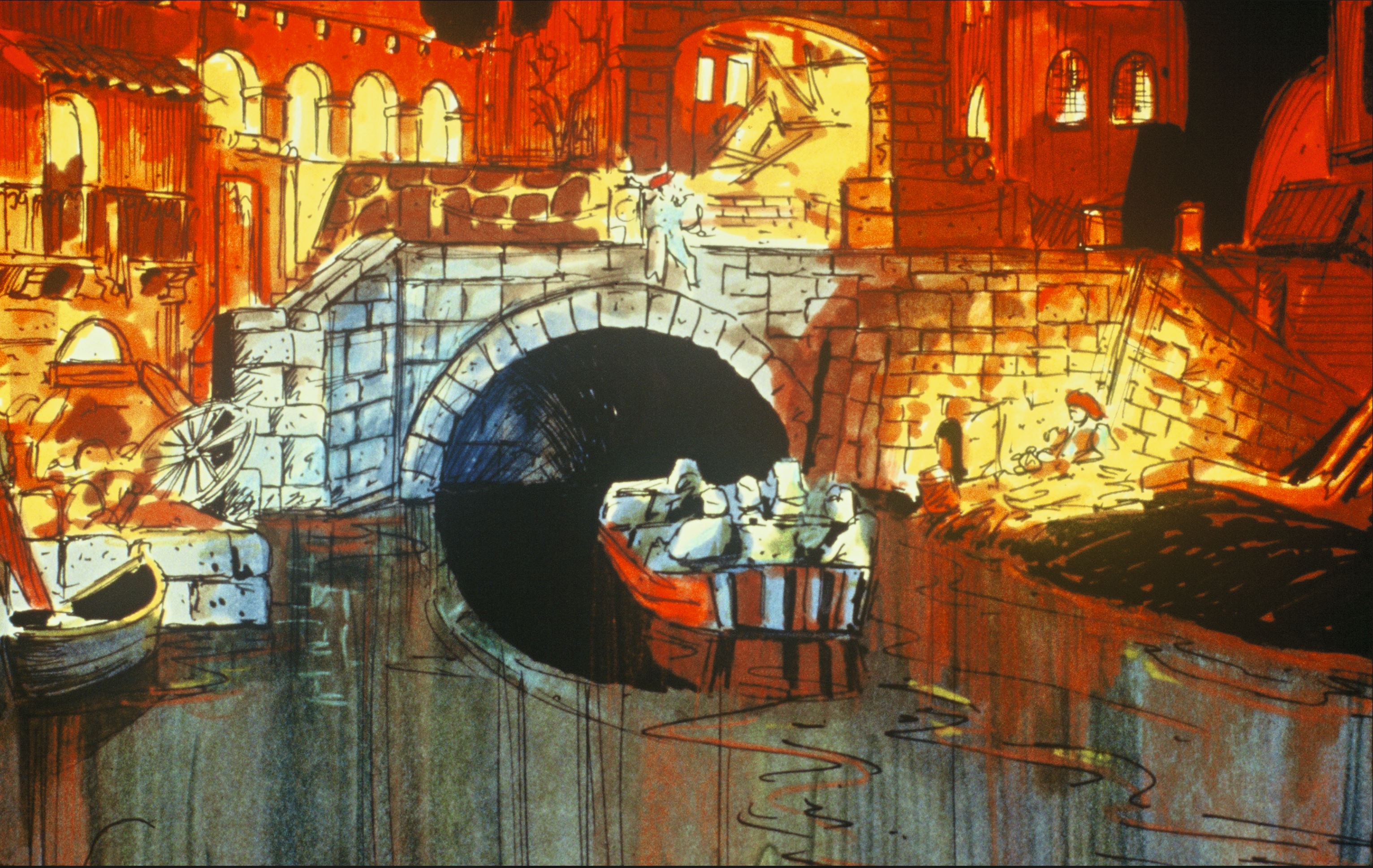
One of Pirates of the Caribbean’s most famous scenes goes from concept (top) to in-progress reality (below).
It’s quickly clear why they’re here as a double act – when it comes to making something in Disneyland, storytelling and building are completely intertwined.
Get all the latest news, reviews, deals and buying guides on gorgeous tech, home and active products from the T3 experts
First they create the story, then find or create the technology needed to bring it to life. Heerwagen explains that he also works in a “tag team” with the Art Director, Beth Clapperton, travelling to trade shows and investigating ways to realise rides together.
Rehabbing older attractions is an especially delicate process, because there’s also the history of the rides to protect. When modernising a ride, the results still have to feel the same to guests who’ve been before, even if a lot has changed. Two of the attractions that have had makeovers are Pirates of the Caribbean and Star Tours.
Both were part of the park’s opening line-up, based on versions in the Californian Disneyland, and each has a heady heritage, too: Star Tours was a collaboration with George Lucas, while Pirates of the Caribbean was the last ride Walt Disney worked on.
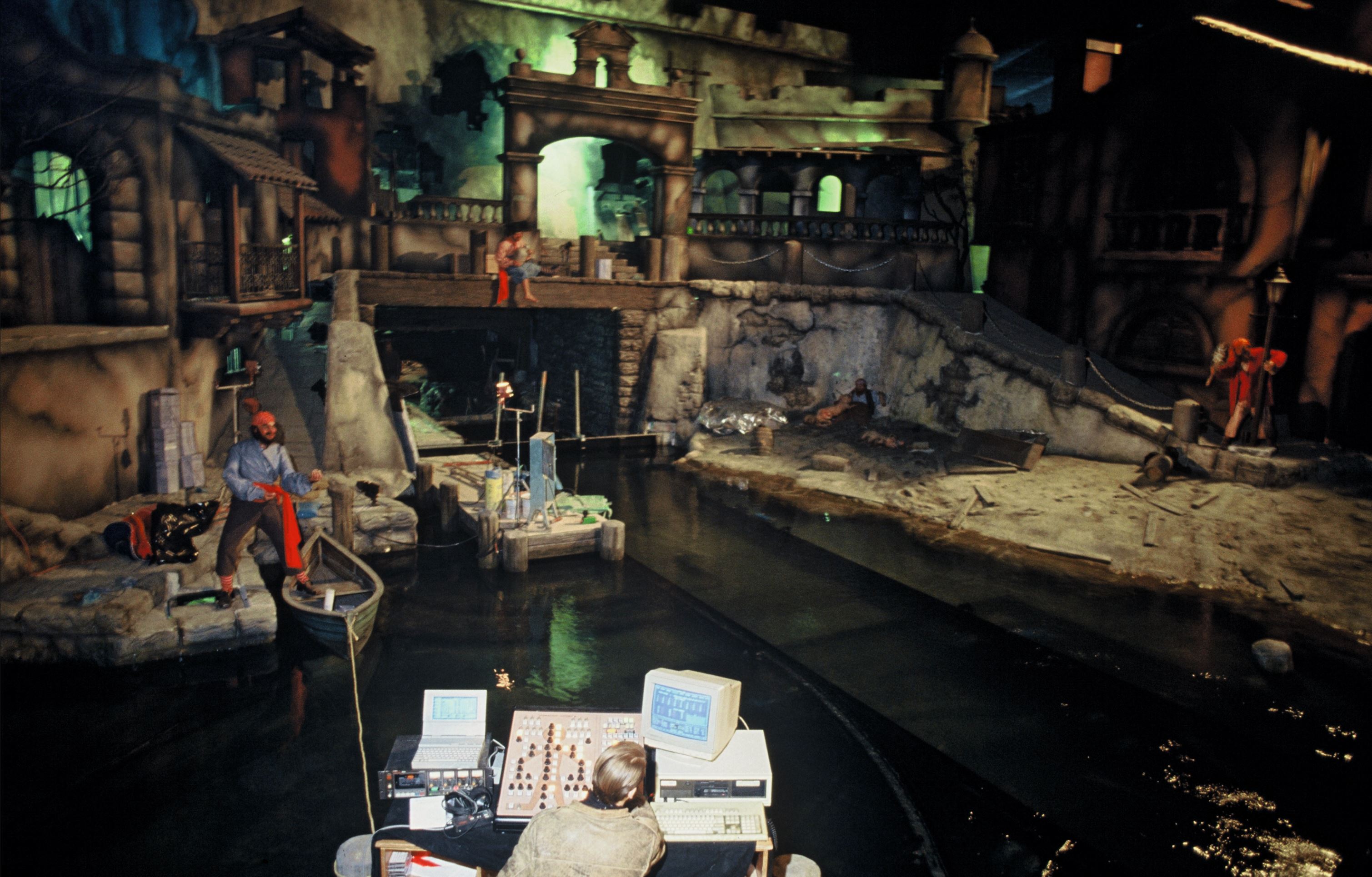
The programming tech doesn’t look quite as modern now as it did at the time…
But with Pirates now a movie franchise, and many more films in the Star Wars universe, the old versions didn’t cut it any more. As Cayuela explains, “Now, when kids come to the park, they see Pirates of the Caribbean and they expect the characters from the movies.” And leaving kids disappointed is not exactly in Disneyland’s playbook.
So in 2017, Pirates was rehabbed to make changes in everything from the lighting to the characters and the story that threads through it… but not too many changes.
“It’s important that guests can’t tell the different between what’s old and new,” explains Heerwagen. He says they have to “meet the original intent” when rehabbing, which can inform both what they change and what they keep the same.
For example, more advanced animatronics are available now, such as in the near-real Avatar robots being developed for Walt Disney World in Florida, but they can’t suddenly use ultra-real robotics for Captain Jack, because he has to exist alongside the 25-year-old characters.
So a more fittingly animated Jack appears a few times in Pirates, including at one point on a pile of 32,000 hand-placed gold coins that hide his mechanisms – because that’s how things were built in Pirates.
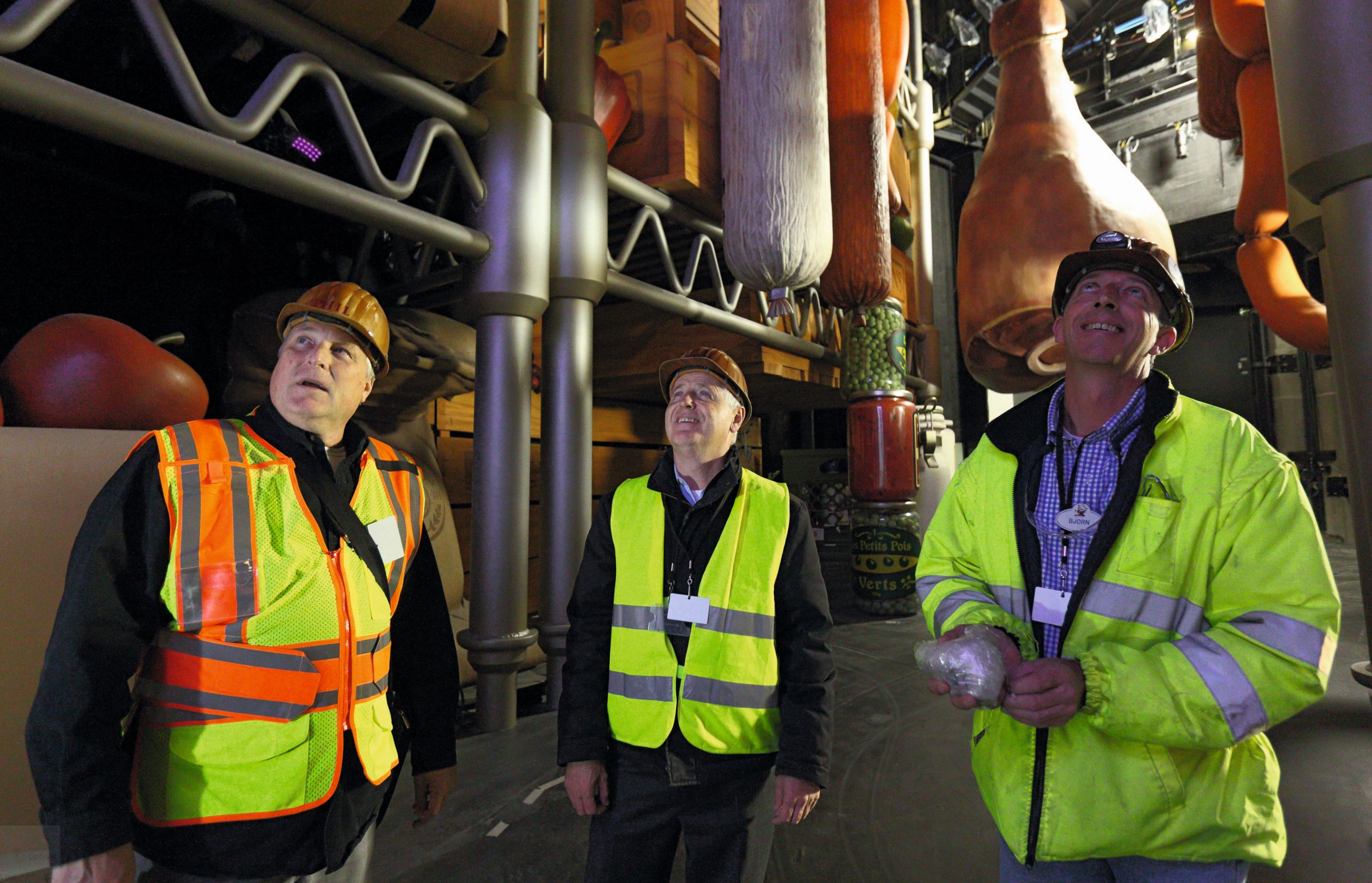
In other areas, though, it was a chance to fully modernise. The audio elements have been upgraded, with new speakers that are placed closer to the animatronics, so that the sounds of them shouting have a better sense of presence.
The lighting is all LED – a change being made to all the rides over time, partly because of its heat and energy use benefits, and partly to unify their systems as much as possible. Having 52 different attractions all running off different systems would be a logistical nightmare. The use of lighting has also been tweaked to draw more attention to the action in various scenes and dim lights on the scenery.
When Cayuela explains this, he adds that this is why the queue to Pirates of the Caribbean is very dimly lit: it cunningly uses the time you’ll spend queueing to adjust your eyes to the light level, so you can see better inside.
The queues are where the rides begin, in more ways than one. Many attractions are designed to give you a glimpse of the ride itself near the start of the queue, so you get an idea of what’s to come. But most rides also have a story to them, and this always starts in the queue, even if it’s only more of a light setting than a real narrative.
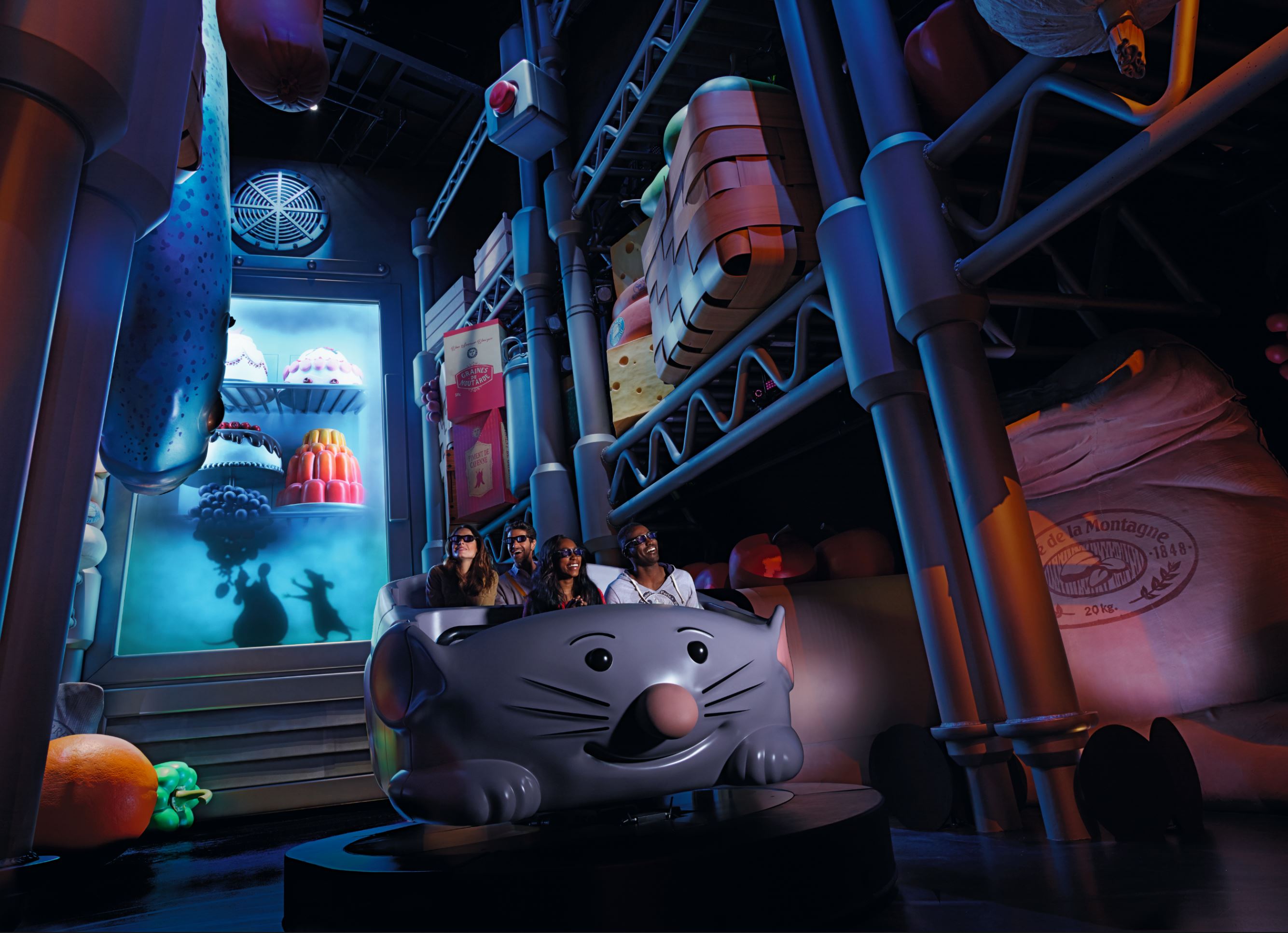
A trip past the radiator in Ratatouille brings a chill – the air-con system is used to blast cold air here. Later in the ride, an oven gently heats you up.
Tour de force
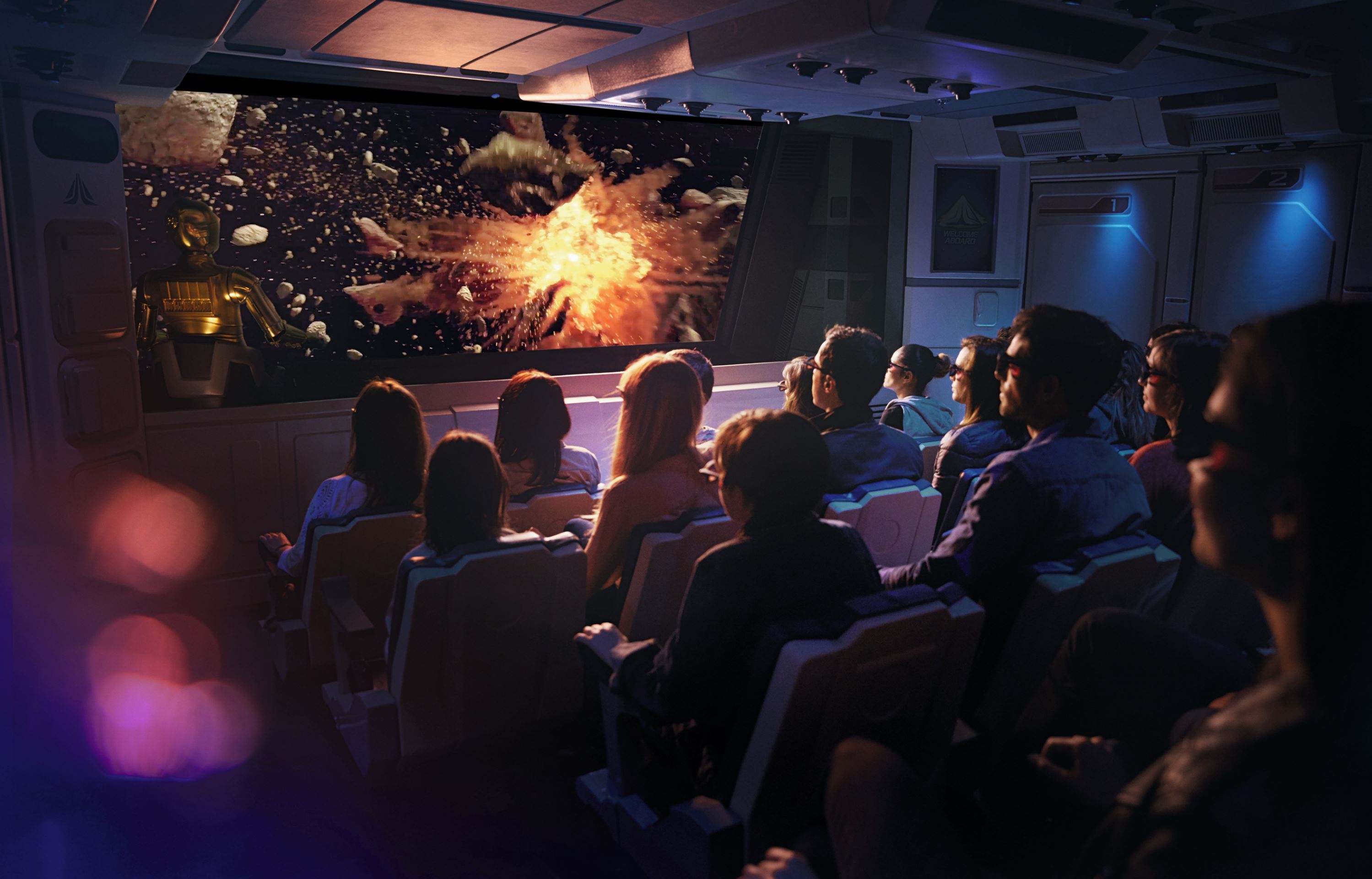
Star Tours is one of the rides that has a full-on narrative, and had a much more dramatic rehab process than Pirates.
The updated ride reopened earlier this year, now named Star Tours – The Adventure Continues, and though many elements will be familiar to people who’ve seen it before, Heerwagen says that it was “pretty much gutted,” and that they started from scratch with just the shell and ride technology.
The story starts in the entrance, designed to look like an airport departure lounge, where visitors see R2-D2 and the ship that they’ll be ‘flying’ on, with C-3PO working nearby - these are brand-new animatronics. Later, droids work on processing luggage, which is shown being scanned in 3D on a screen.
These droids can all be lowered down shafts for maintenance, which is extremely Star Wars in itself. A camera ‘scans’ guests as they go by, which they can interact with by waving and seeing themselves, while nearby a ‘window’ (in reality, a screen) shows Stormtroopers in the station – a taster of the ride’s upcoming story.
We’re allowed to fail a bit… it’s only through failure that you get success
Björn Heerwagen
The Star Tours ride section is now 3D, using glasses designed in collaboration with the Imagineering team, with the old 35mm projectors replaced by 4K laser systems.
It looks stunning, but the genius part is that it’s different every time. There are well over 60 possible journeys that your ship can take, in locations from various films (“Continuitywise, I’m sure it is a big nightmare,” Cayuela chuckles) with characters who may or may not pop up during the journey.
This is the advantage of switching to digital, and these trips are all truly random – when the operator presses ‘go’, the computer decides what you’ll see, and the differences are huge.
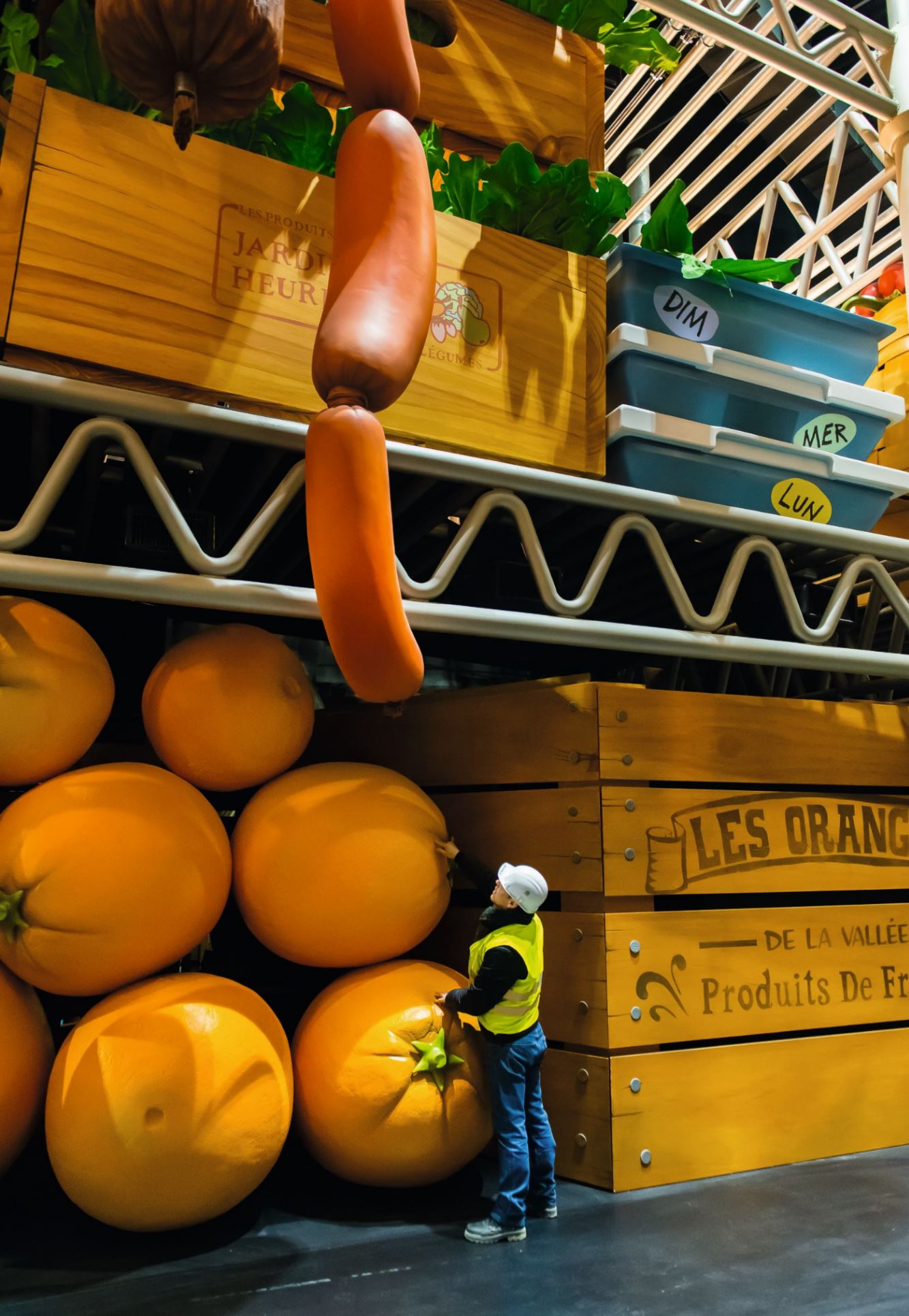
This actually presented a big challenge for Heerwagen’s team, because the ride sill uses the original 25-year-old hydraulics. Not only was the task of creating ambitious new flights difficult on older hardware, but the simulators aren’t identical anymore – they’ve worn in slightly different ways over the years – so the movement effects had to be individually calibrated on them.
The ride integration team spent 16 weeks riding the simulators getting everything right, and is facing another three weeks on there in the near future (they decline to say why).
Constraints like these present interesting challenges for the rehabs – in some cases, the limiting factor is the physical space. “On new builds, you can say, ‘The building’s too small! Make it bigger,’” says Heerwagen.
But when rehabbing the ride Big Thunder Mountain, the problem was the opposite. “You can’t push the walls, you can’t push the ceiling,” he explains.
If there’s electronics or something they need to fit in but are struggling for space, Heerwagen says there’s only one solution: “Teamwork. To adapt and miniaturise.”
Paris in Paris
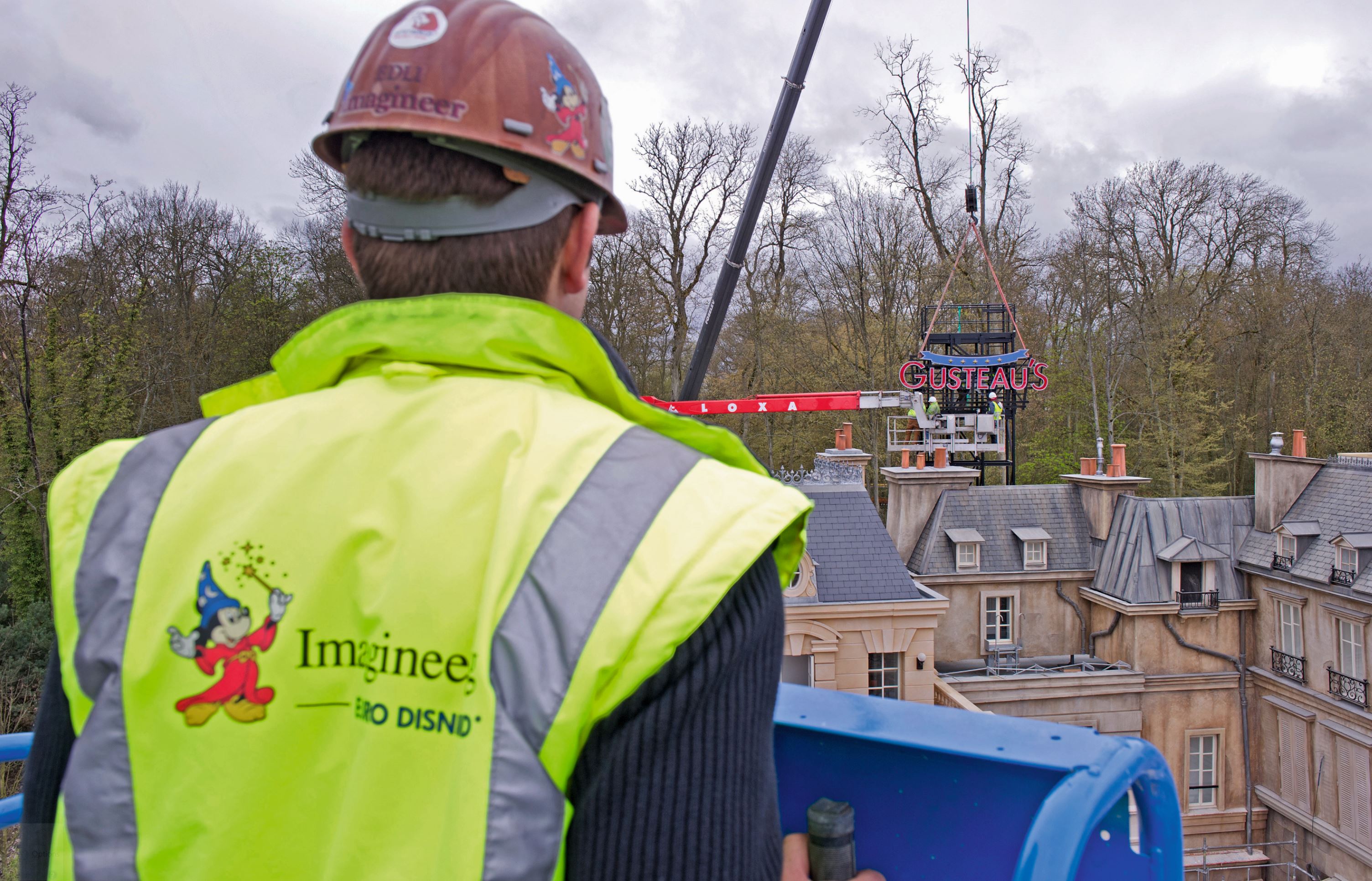
The sign for Gusteau’s is lowered into place outside Rataouille. To make it look Pixar-like, all the straight lines in the ‘Parisian’ square are crooked.
The most recent brand-new attraction is Ratatouille, and creating something from nothing is a totally different experience to the rehab process.
The idea of the ride is that you’re rat size, having an adventure through a restaurant kitchen. The journey is part physical, and part video. You sit in rat-shaped cars, which travel in packs of three.
During the ride, you move through areas like a giant larder filled with over-sized props, then switch seamlessly into 3D domed movie displays, and back. There’s even a heated oven and cold refrigerator to pass under.
At first, the team explored doing the whole thing with physical props instead of any video, but Heerwagen says this came out “kitsch,” so they had to find another way.
“We’re allowed to fail a bit,” he says. “It’s only through failure that you get success.” Though he also adds that, if they’ve started building a ride and something isn’t working, it’s rare for ideas to be totally ditched: system, which is all housed within the Ratatouille buildings.
Another first for the park is Ratatouille’s rat cars, which don’t run on rails.
They’re guided by GPS, and the reason is that each pack of three emulates the scurrying of rats throughout the ride, crossing over each other’s paths and mixing up the order as you go through the ride – there are actually 72 different possible routes your car can take, so just like Star Tours, you’ll end up with a slightly different story to anyone else who visits.
This seems to be a big focus for Disney that new technology allows – the flexibility for everyone to have a unique experience.
The Ratatouille guided car technology is based on existing standards for automated warehouses, and was running on a test track in Chicago for a year, before another eight months of testing and integration in the ride. Safety is paramount, naturally – cars stop dead if they go more than 1.5m off course.
Ride on time
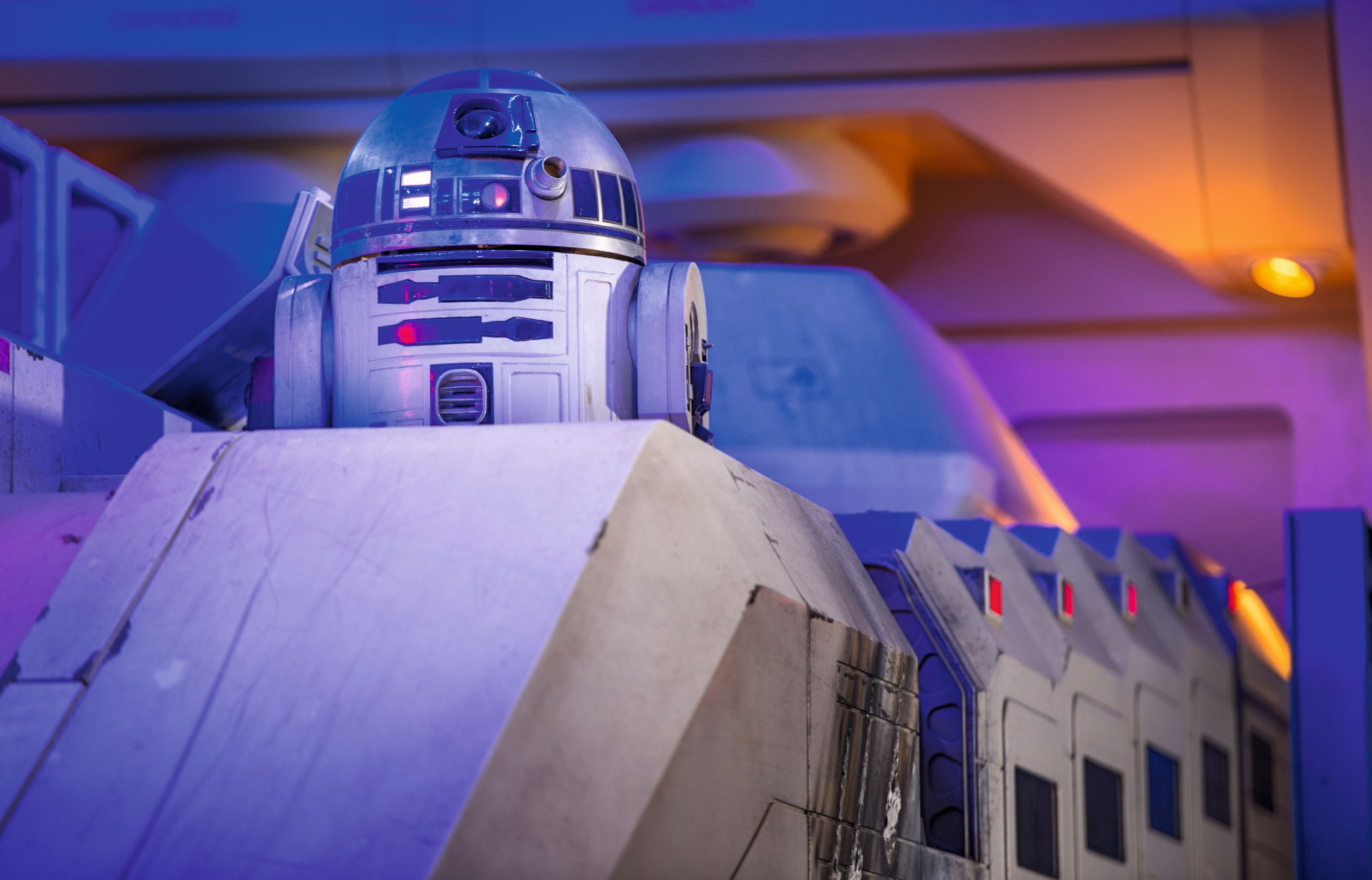
Star Tours has been outfitted with brand-new animatronic characters and up-to-date laser projection. Disneyland can sometimes use off-the-shelf systems, but will usually still need to customise them.
What’s the hardest part of all this work? “Timing,” Heerwagen says simply. On the opening of Ratatouille, he was tinkering with the fountain outside an hour before opening. On the other hand, Pirates was the easiest re-opening he’d ever had – his team wasn’t even working late the night before.
Heerwagen says his team is always curious and trying new things out. Even the subtlest things like weathered-effect paints don’t appear by magic – the team is always working on long-term testing of techniques and technology upgrades so they can leap on unexpected advances.
One example was the rise of digital audio: during the development of Space Mountain, they were able to add on-board audio to the cars because they could play sound from a hard drive for the first time – tape didn’t survive the rattling. It wasn’t planned, but they jumped on it as soon as it became viable. Still, even those new possibilities have to be right.
Virtual reality might seem like an obvious route for a magical Disney experience in the future, but Heerwagen is pretty cool on it. “It has to enhance the experience,” he explains. “We can’t just replace something with it.”
Given that it’s a limited social experience, he says they would happily use VR, but only if it was the only way to achieve the story they’re looking to tell. That’s the Disney way.

Matt is T3's former AV and Smart Home Editor (UK), master of all things audiovisual, overseeing our TV, speakers and headphones coverage. He also covered smart home products and large appliances, as well as our toys and games articles. He's can explain both what Dolby Vision IQ is and why the Lego you're building doesn't fit together the way the instructions say, so is truly invaluable. Matt has worked for tech publications for over 10 years, in print and online, including running T3's print magazine and launching its most recent redesign. He's also contributed to a huge number of tech and gaming titles over the years. Say hello if you see him roaming the halls at CES, IFA or Toy Fair. Matt now works for our sister title TechRadar.

